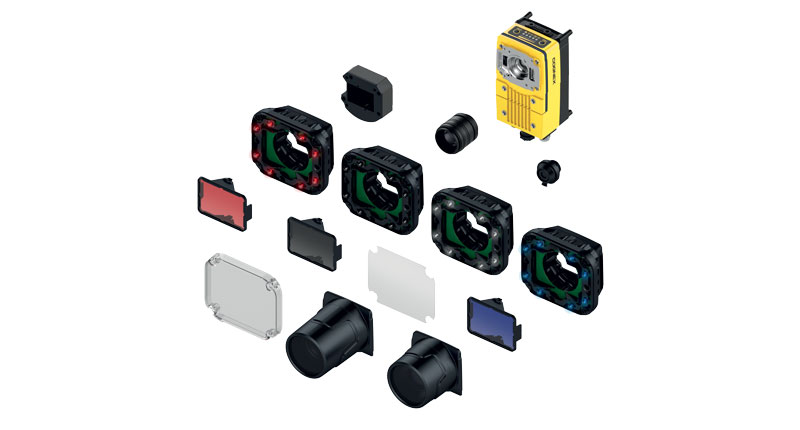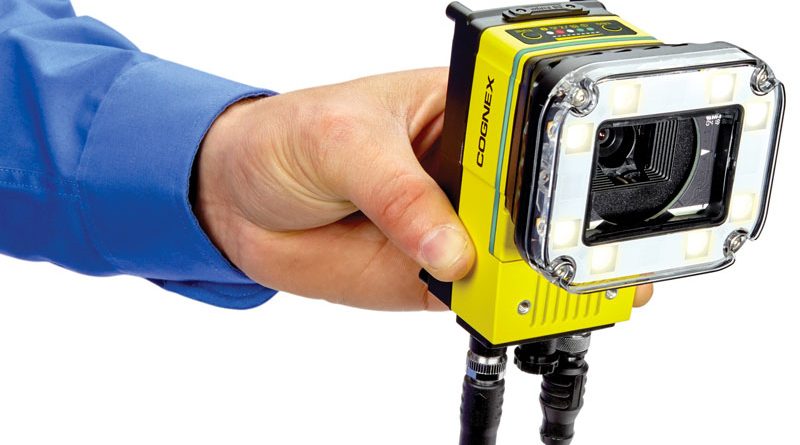Deep Learning and IA Make a Camera Smart
Integration of Cognex In-Sight ViDi deep learning vision software into an intelligent camera allows automation engineers to easily perform difficult OCR readings, assembly checks, and defect detection that are often too difficult to implement with traditional, rule-based machine vision tools and require reliable, fast, and consistent results not possible with human inspection.
Deep Learning and Artificial Intelligence (AI) are among the buzzwords not only in the manufacturing industry but also in many other fields. Deep Learning, a type of AI that leverages neural networks can be easily explained: Similar to how humans learn what a house is from a large number of examples, so too can a deep learning system come to understand the nature of an object from labelled images. Whether a car’s bumper, a package’s envelope, or something else, deep learning is an examples-based approach to solving inspection challenges. Furthermore, each inspection can be continually improved by feeding the existing algorithm with more example image data. This new data enhances the system leading to more accurate results. Whether this is real intelligence or not, might be discussed by experts. From a practical point of view, the benefits for manufacturers are obvious and multiple. Manufacturers still rely on human inspectors throughout the production process because traditional machine vision systems cannot handle the complexity or variability within certain tasks. But humans can be prone to inconsistent results from one human to the next, or they can tire over the course of an eight-hour shift. Additionally, there are many aspects throughout production that still go uninspected from one reason or another. Both of these realities open manufacturers up to quality control issues or the chances for recalls. A vision system with integrated artificial intelligence, for example, is able to combine the judgement of a human inspector with the robustness and consistency of an automated solution for inspection or quality control. This is exactly the main advantage of the new In-Sight D900 vision system from Cognex. It embeds Cognex’s deep learning software, known as In-Sight ViDi, inside an industrial-grade smart camera. This combination expands the possibilities of in-line factory automation inspections.

Fast factory integration
The In-Sight D900 hardware is a compact, industry-grade smart camera that can easily be installed and deployed on the line without the need for a PC. The highly-modular, IP67-rated vision system includes field changeable lighting, lenses, filters and covers that can be customized to match the individual application requirements. The High Dynamic Range (HDR+) imaging creates evenly exposed images, an LED indicator allows pass/fail monitoring at a distance, and the inspection results can be stored locally on an SD card. The embedded inference engine was added to specifically run deep learning applications. While the hardware is amongst the most advanced for Cognex, it’s this ability of the In-Sight D900 to run a new class of deep learning-based applications that makes it noteworthy. The In-Sight D900 works with the familiar and easy-to-use spreadsheet user interface which simplifies application development and factory integration. Application engineers have access to the full suite of traditional machine vision tools, like PatMax, edge finders, and measurement tools. But, with the In-Sight ViDi, the D900 consists of three deep learning tools which all aim at specific and widespread applications: ViDi Read, ViDi Check and ViDi Detect. These new inspection tools help factory automation customers easily solve applications that are too time-consuming or complex to deploy with traditional, rule-based machine vision tools. For all three application tools, users can take advantage of the intuitive In-Sight spreadsheet interface allowing for a fast setup of deep learning applications without programming. The In-Sight spreadsheet simplifies application development and streamlines factory integration with a full I/O and communications function set. It also enables the ability to combine traditional Cognex rules-based vision tools (like PatMax Redline) and deep learning tools in the same job, leading to quicker deployments. Since In-Sight ViDi requires vastly smaller image sets and shorter training and validation periods than other deep learning solutions, applications are quick and easy to set up, teach, and deploy.

OCR, assembly verification and defect detection
With the In-Sight ViDi Read tool, the user is able to solve challenging OCR applications in minutes. This module deciphers badly deformed, skewed, and poorly etched codes using optical character recognition. This tool works right out of the box, dramatically reducing development time, thanks to the deep learning pretrained font library. The user simply defines the region of interest and sets the character size. In situations where new characters are introduced, this robust tool can be retrained to read application-specific characters that traditional OCR tools are not able to decode. In comparison to conventional vision systems without deep learning, this feature offers obvious advantages. The ViDi Check tool on the In-Sight D900 allows manufacturers to perform fast and accurate assembly verification. The system is able to detect complex features and objects. It verifies whether parts and kits are assembled correctly based on their location within a user-defined layout. The tool can be trained to create an extensive library of components, which can be located in the image even if they appear at different angles or vary in size. A third tool called ViDi Detect was designed for analysing complex defect detection tasks. It is able to learn from images of good parts in order to identify defective parts. In-Sight ViDi Detect is ideal for finding anomalies on complex parts and surfaces, even in situations where defects can be unpredictable in their appearance.

